Every morning, a little girl and her cat engage in the cutest and most amusing conversations.
While it might sound like baby babble to most of us, these two seem to understand each other perfectly.
When you think about it, babies and cats have quite a bit in common, which probably gives them plenty to talk about.
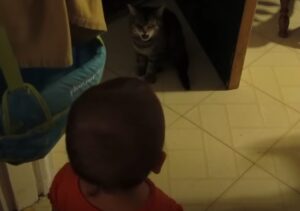
Their conversations are likely filled with updates on their daily routines, like eating, napping, and playing.
You can almost imagine them chatting about how their parents just don’t quite understand their needs.
Honestly, don’t we all wish for a life of napping, snacking, and playing like them?
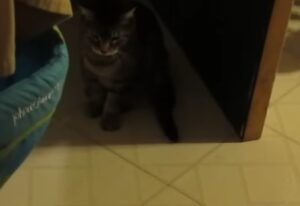
Although their routines might not always line up perfectly, the little girl and her tabby cat still manage to connect each day.
The cat spends her time independently exploring, while the baby is still under her parents’ watchful eye.
This only makes their nightly conversations all the more exciting—especially for the baby, who listens to the cat’s tales of outdoor adventures with envy.
The cat, with her freedom to roam, probably fills the baby in on her adventures around the neighborhood.
Meanwhile, the baby has her own stories to share, like the cartoons she’s watched and the snacks she might have shared with her furry friend.
Their bond is undeniable, and it’s clear they live in their own little world that no one else is part of.
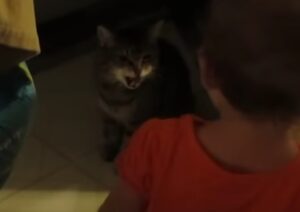
As their conversation continues, the baby becomes more and more animated, excitedly sharing her day.
On the other hand, the cat keeps her responses calm and poised, with quiet meows when it’s her turn to “speak.”
Typical cat behavior—cool, composed, and always in control of the situation.
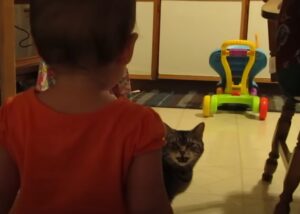
Eventually, as the baby’s excitement peaks, she begins to lose interest in the conversation and starts to wander off.
This is where their similarities really shine.
Anyone with a cat knows that felines often do the same—engage for a moment before deciding they’ve had enough.
Both the baby and the cat seem to have the same short attention span!
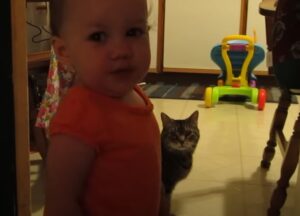
Even though the baby’s words may sound like gibberish, it’s not just about what she says but how she says it.
Research shows that cats respond more to tone than actual words.
Feline behaviorist Marilyn Krieger explains,
“How words are spoken is really important. Cats are very sensitive and can feel safe or threatened by the tone of voice and the loudness.”
This could be why the cat calmly listens to the baby’s chatter until things get a little too noisy for her liking.
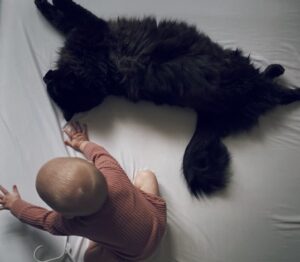
Studies have confirmed that cats do pay attention when spoken to, especially if the tone is soft and calm.
Pet Care RX explains that communicating with cats is less about the words and more about how they interpret the tone and body language.
So while the baby’s babbling might not make sense to us, the cat understands it as friendly conversation.
When the baby tries to follow the cat to keep the conversation going, the cat decides she’s had enough and tries to hide under a chair.
However, the baby is just as determined and follows her, refusing to let the conversation end so soon.
It’s clear that their bond is stronger than just words, and their interactions are a delightful mix of persistence and playfulness.
Click on the video below to watch their hilariously adorable conversation for yourself!
Please SHARE this with your friends and family.





